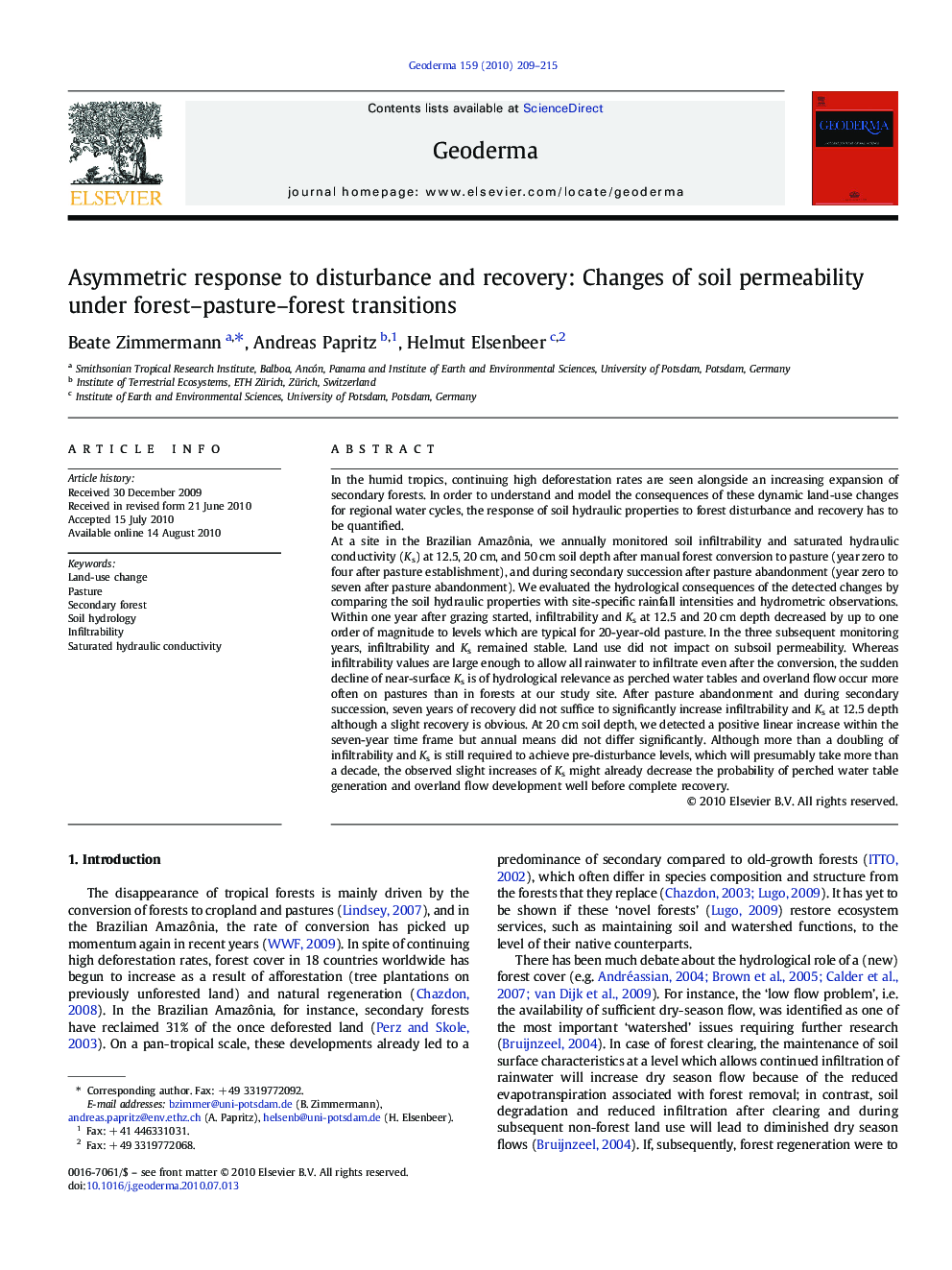| کد مقاله | کد نشریه | سال انتشار | مقاله انگلیسی | نسخه تمام متن |
|---|---|---|---|---|
| 4574546 | 1629516 | 2010 | 7 صفحه PDF | دانلود رایگان |

In the humid tropics, continuing high deforestation rates are seen alongside an increasing expansion of secondary forests. In order to understand and model the consequences of these dynamic land-use changes for regional water cycles, the response of soil hydraulic properties to forest disturbance and recovery has to be quantified.At a site in the Brazilian Amazônia, we annually monitored soil infiltrability and saturated hydraulic conductivity (Ks) at 12.5, 20 cm, and 50 cm soil depth after manual forest conversion to pasture (year zero to four after pasture establishment), and during secondary succession after pasture abandonment (year zero to seven after pasture abandonment). We evaluated the hydrological consequences of the detected changes by comparing the soil hydraulic properties with site-specific rainfall intensities and hydrometric observations.Within one year after grazing started, infiltrability and Ks at 12.5 and 20 cm depth decreased by up to one order of magnitude to levels which are typical for 20-year-old pasture. In the three subsequent monitoring years, infiltrability and Ks remained stable. Land use did not impact on subsoil permeability. Whereas infiltrability values are large enough to allow all rainwater to infiltrate even after the conversion, the sudden decline of near-surface Ks is of hydrological relevance as perched water tables and overland flow occur more often on pastures than in forests at our study site. After pasture abandonment and during secondary succession, seven years of recovery did not suffice to significantly increase infiltrability and Ks at 12.5 depth although a slight recovery is obvious. At 20 cm soil depth, we detected a positive linear increase within the seven-year time frame but annual means did not differ significantly. Although more than a doubling of infiltrability and Ks is still required to achieve pre-disturbance levels, which will presumably take more than a decade, the observed slight increases of Ks might already decrease the probability of perched water table generation and overland flow development well before complete recovery.
Figure optionsDownload as PowerPoint slideResearch Highlights
► Forest-to-pasture conversion reduces soil permeability drastically and fast.
► This reduction affects near-surface hydrological processes.
► Soil permeability recovers modestly and slowly upon pasture abandonment.
Journal: Geoderma - Volume 159, Issues 1–2, 15 October 2010, Pages 209–215